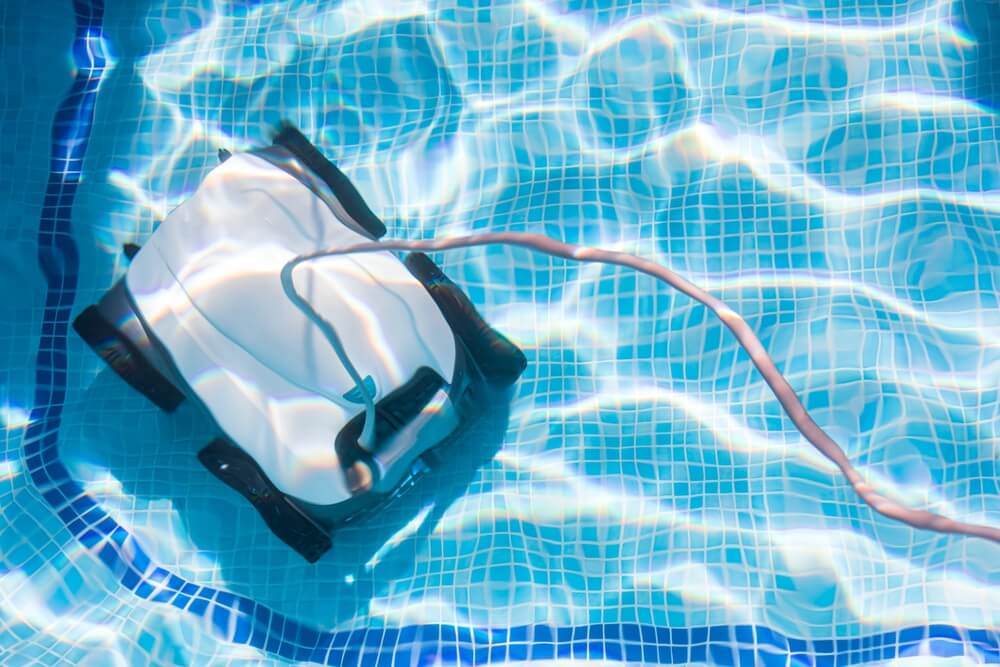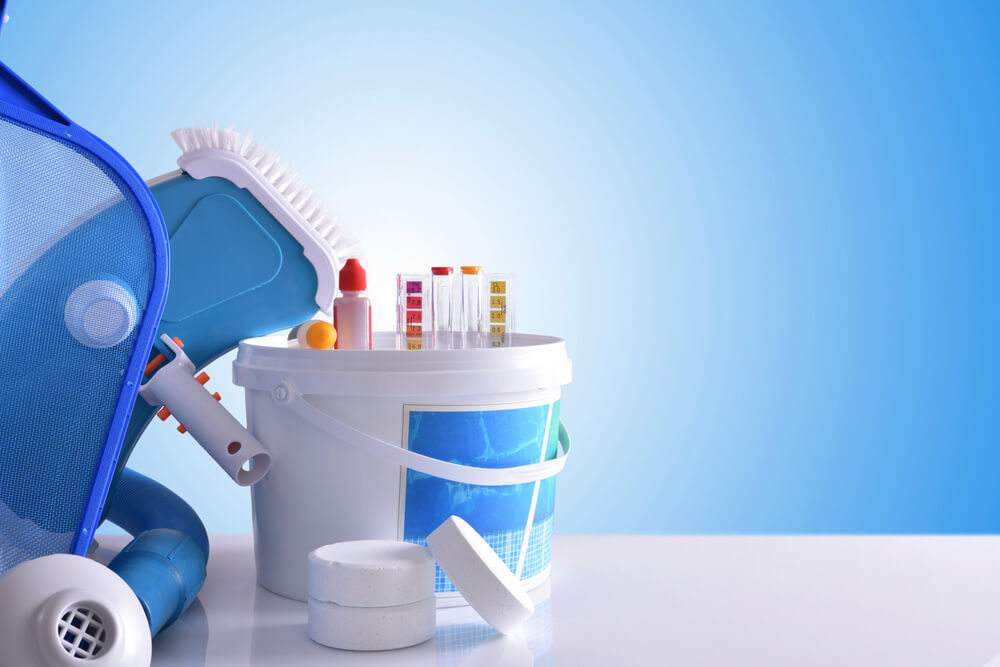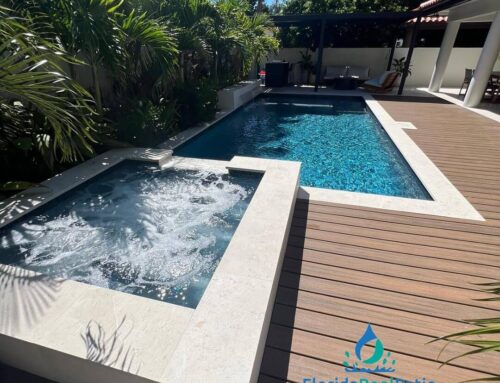How to open a pool in spring? As winter thaws and spring approaches, many pool owners look forward to opening pools for the season. However, the process of opening a pool in the spring after months of winterization can be daunting, especially for those new to pool ownership. But with some knowledge preparation and help from Swimming Pool and Spa Repairs and Maintenance in Miami, opening a pool after winter can be a simple and rewarding experience.
Proper pool opening is crucial to ensure that it is clean, clear, and safe for swimming. Neglecting this essential step can result in expensive repairs and maintenance and potential health risks for swimmers. This blog will provide a comprehensive guide on opening a pool in the spring. We will walk you through the process step-by-step, from removing the winter cover to balancing the water chemistry so that you can get your pool ready for a fun and relaxing summer season. Or, if you don’t want to do it on your own, feel free to contact Florida Pool Patio.
Remove the Pool Cover’s Debris

Cleaning off the pool cover is essential in opening a pool for the swimming season after winter. During winter, debris, leaves, and other organic matter can accumulate on the cover, making it dirty and unhygienic. If this debris is not removed before opening the pool in spring, it can fall into the water and create a breeding ground for bacteria and algae, which can make the water unsafe and unpleasant to swim in. Additionally, if the debris remains on the cover, it can cause damage or even puncture the cover, requiring expensive repairs or replacement.
Cleaning off the pool cover is a simple and straightforward process. You can use a leaf blower or a pool cover pump to remove any standing water and debris. Then, using a soft-bristled brush and a mild detergent solution, you can gently scrub the cover to remove any dirt or stains. Once the cover is clean and dry, you can fold it up and store it in a dry and cool place until next winter. By cleaning it off, you can help ensure that your pool stays clean and healthy and that you can enjoy a refreshing swim in crystal-clear water all season long.
Chemicals Checklist Before Pool Opening
A checklist of pool inventory is an essential tool that helps pool owners and operators ensure that the water in their pools is safe and free from harmful contaminants. The checklist includes a comprehensive list of all the chemicals needed to maintain the pH balance, sanitize the water, and control algae growth. By regularly checking and updating the chemical inventory, pool owners can ensure that they have the necessary chemicals on hand to keep the pool water clean and safe for swimmers.
Furthermore, creating a checklist of pool inventory necessities before the pool opening helps prevent potential accidents and health hazards that could result from improper handling of chemicals. Chemicals used in pool maintenance are often hazardous and can cause skin and eye irritation, chemical burns, or even respiratory problems if inhaled. By keeping a record of the chemicals used, pool owners can ensure that they are using the correct amount of chemicals and following the necessary safety precautions when handling them. This reduces the risk of accidents and ensures the pool is safe for everyone using it.
Inspection Before the Pool Opening in Spring
Inspecting the pool before the pool opening after winter is crucial to ensure that the pool is safe and ready for use. Winter weather and lack of use can cause significant damage to the pool’s infrastructure and equipment, and inspecting the pool can help identify any potential problems that need to be addressed before the pool opening. This can save time and money by preventing more significant issues from developing and reducing the risk of injury to swimmers.
Another reason to inspect the pool before opening is to check the water quality. During the winter months, the pool’s water may have become contaminated with debris and bacteria, and the water’s chemical balance may be off. Inspecting the water quality before opening the pool can help identify any issues that need to be addressed, such as balancing the pH levels or shock-treating the water to kill bacteria. This ensures that the water is safe for swimming and reduces the risk of illnesses caused by contaminated water.
In addition to checking the water quality, inspecting the pool before opening can help identify any leaks or damage to the pool’s infrastructure. Winter weather, freezing temperatures, and lack of use can cause cracks in the pool’s walls and floors, leading to leaks and water loss. Inspecting the pool for any signs of damage before opening can help identify any issues that need to be repaired, reducing the risk of further damage and costly repairs.
Lastly, inspecting the pool can help ensure that all the pool’s equipment is in good working condition. The pool’s filtration system, pumps, and heaters may have been turned off during the winter months, and inspecting them before opening the pool can help identify any problems that need to be fixed. This ensures that the pool’s equipment is functioning correctly, which can help maintain water quality, reduce energy consumption, and prevent equipment failure during the swimming season.
Spring Pool Opening Brushing and Vacuuming

Brushing and vacuuming before the spring pool opening are essential steps in maintaining a clean and healthy swimming pool. By doing it regularly, pool owners can help remove this buildup and ensure that the pool remains clean and safe.
Brushing the pool is essential for removing dirt and algae from the walls and floor. This can help prevent the buildup of harmful bacteria and ensure that the pool water remains clear and inviting. Pool owners should use a pool brush to scrub the walls and floor thoroughly, paying extra attention to areas that are hard to reach, such as corners and steps.
Vacuuming the pool is equally important, as it helps remove any debris or dirt that may have settled on the pool floor. This is especially important for pools with a lot of trees or foliage nearby, as leaves and other debris can quickly accumulate in the pool. Regular vacuuming ensures the water is clean and free from harmful contaminants that could cause illness.
Regular brushing and vacuuming can also help extend the life of the pool’s infrastructure and equipment. When dirt and debris accumulate on the pool walls and floor, it can cause wear and tear on the pool’s surfaces and the filtration system. By regularly cleaning the pool, pool owners can reduce the amount of damage caused by debris and ensure that the pool remains functional for years to come.
Reconnect the Equipment Before the Pool Opening in Spring
Reconnecting pool equipment is essential in preparing a pool for the opening season. The equipment includes the pump, filter, heater, and other components that are necessary to keep the pool clean and safe for swimmers. Before opening the pool, it is important to reconnect these pieces of equipment to ensure that they are functioning correctly and can effectively circulate and filter the water. Failure to reconnect the pool equipment can result in poor water quality, inadequate circulation, and other issues that can affect the overall safety and enjoyment of the pool.
One of the main reasons it is essential before the pool opening is to ensure the water is appropriately filtered and circulated. Without a functioning pump and filter, the water in the pool can quickly become stagnant, leading to the growth of algae and other harmful microorganisms. By reconnecting the equipment before opening the pool, you can help ensure that the water is clean, clear, and safe to swim in.
Another reason why it is crucial is to ensure that any potential issues or problems with the equipment can be addressed before the pool is used. By testing the equipment before opening the pool, you can identify and fix any leaks, malfunctions, or other issues that may have occurred during the off-season. This can help prevent more serious problems from occurring later on and can also help ensure that the pool is operating at peak efficiency throughout the season.
Regulate Water Levels
Refilling the pool to regular water levels is an important step after an extended period of time. During the off-season, water may have evaporated or been drained from the pool for maintenance or repairs, leading to decreased water levels. Refilling the pool to its regular water levels before use is important to ensure proper filtration, circulation, and chemical balance.
One of the primary reasons why refilling the pool is essential is to ensure that the pool’s filtration and circulation systems are working effectively. When the water levels are too low, the skimmer and other components may not function properly, leading to poor water quality and an increased risk of algae growth and other harmful microorganisms. By refilling it, you can help ensure that the pool’s filtration and circulation systems are working as they should, which can help keep the water clean, clear, and safe.
Another reason why refilling the pool is essential is to ensure that the chemical balance of the water is maintained. This can make the water uncomfortable or even dangerous for swimmers.
Pool Filter and Testing the Water Before Pool Opening
Turning on the pool filter and testing the water are essential steps in maintaining a safe and healthy swimming pool. The pool filter is responsible for removing debris and contaminants from the water. In contrast, regular water testing ensures that the pool’s chemical balance is correct and the water is safe for swimmers.
When the pool filter is turned on, it helps to circulate the water, ensuring that all areas of the pool are properly cleaned. This is essential to remove debris and contaminants from the water, such as dirt, leaves, and insects. Without proper filtration, the water can become cloudy and potentially harmful to swimmers. Regular filter maintenance and cleaning are also necessary to ensure that the filter is working correctly and efficiently.
Testing the water is equally essential, as it ensures that the pool’s chemical balance is correct and the water is safe for swimming. The pool’s pH levels, chlorine levels, and total alkalinity all need to be within specific ranges to maintain water clarity, prevent bacterial growth, and ensure that the water is safe for swimmers. Testing the water regularly helps to identify any imbalances or deficiencies, allowing pool owners to adjust the chemical levels and keep the water safe and healthy.
Regular water testing can also help identify any potential problems with the pool’s infrastructure or equipment. For example, if the pH levels are consistently low, it may indicate a problem with the pool’s filtration system or a leak in the pool’s walls or floor. Identifying these issues early can help prevent further damage and ensure the pool remains safe and functional for years.
By ensuring that the water is adequately filtered and chemically balanced, pool owners can help prevent the spread of bacteria and illnesses, reduce the risk of damage to the pool’s infrastructure, and ensure that the pool remains a safe and enjoyable place for swimmers of all ages.
Shock the Pool

Shocking a pool refers to the process of adding high levels of chlorine or other chemicals to the water to kill off any algae, bacteria, or other harmful microorganisms that may be present. This is typically done when the pool has become excessively dirty, cloudy, or contaminated, and normal levels of chlorine are not sufficient to clean it. The term “shock” is used because the sudden surge of chemicals can temporarily change the appearance and smell of the water, as well as the level of chlorine, pH, and other chemical levels.
The process of shocking a pool typically involves adding a large amount of chlorine or other chemicals to the water, often in granular or powder form. This can be done manually or with the use of an automatic pool shock system. It’s important to carefully follow the instructions for the specific product being used, as over-shocking can damage the pool’s surface or equipment. At the same time, under-shocking may not effectively clean the pool. After the chemicals have been added, the pool may need to be left unused for several hours or even days to allow the shock to work and the chemical levels to return to normal.
Overall, the purpose of shocking a pool is to keep it clean, clear, and safe for swimmers, especially before the spring pool opening. Regular maintenance and testing of chemical levels can help prevent the need for shocking. Still, if the pool has become excessively dirty or contaminated, shocking may be necessary to restore its condition. It’s important to use caution when handling and applying pool chemicals and always to follow the manufacturer’s instructions and safety guidelines to avoid accidents or injuries.
Final Words
How to open a pool in spring? Opening a pool in the spring can be an exciting time for pool owners, but it can also be daunting if not done correctly. By following the proper steps for opening a pool, including cleaning, refilling, reconnecting equipment, and balancing chemicals, you can help ensure that your pool is ready for use and that the water is clean, clear, and safe for swimmers. It is important to remember that maintaining a pool requires ongoing attention and maintenance throughout the season, including regular cleaning, chemical testing, and equipment checks. By investing the time and effort into adequately opening and maintaining your pool, you can help ensure that you and your family can enjoy a safe and enjoyable swimming experience all season long.
It also requires careful planning and attention to detail. By following the proper steps and taking the necessary precautions, you can help ensure that your pool is ready for use and that the water is clean, clear, and safe for swimmers. Whether you are a seasoned pool owner or a first-time pool owner, it is vital to educate yourself on the proper techniques and best practices for maintaining a pool. Doing so can help ensure that your pool provides you and your family with years of enjoyment and relaxation. And, if you don’t want to do it on your own, you can always contact the professionals such as Florida Pool Patio.






